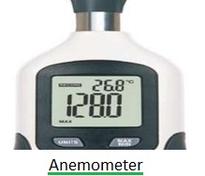Understanding Torques in Analog Meters
Advertisement
Analog meters rely on a delicate balance of forces to accurately display measurements. These forces are generated by three distinct torques: deflecting torque, controlling torque, and damping torque. Let’s explore each of these in detail.
Deflecting Torque
Definition
Deflecting torque is the driving force behind the pointer’s movement on the meter’s scale. It’s the torque that responds directly to the electrical quantity being measured, such as current, voltage, or power.
Function
This torque initiates the movement of the meter’s moving system, causing the pointer to move away from its zero position. The amount of deflection is directly proportional to the magnitude of the electrical quantity being measured.
TD ∝ Measurable quantity
Where: _TD represents the Deflecting Torque. _ Measurable Quantity represents the electrical quantity being measured.
Controlling Torque
Definition
Controlling torque is the opposing force that counteracts the deflecting torque. It ensures that the pointer doesn’t swing wildly off-scale and provides a stable reading.
Function
Without controlling torque, the pointer would simply continue to move until it reached its maximum deflection, regardless of the actual measured quantity. The controlling torque increases as the pointer deflects, eventually balancing the deflecting torque. At this equilibrium, the pointer comes to a steady state position, indicating the measured value.
- At equilibrium, Tc = TD
- Where:
- Tc represents the Controlling Torque
- TD represents the Deflecting Torque
- Controlling torque also plays a crucial role in returning the pointer to its zero position when no electrical quantity is being measured.
Methods for Providing Controlling Torque
- Spring Control: Using springs to provide a restoring force proportional to the deflection.
- Gravity Control: Employing the force of gravity to create a controlling torque.
Damping Torque
Definition
Damping torque is the force that opposes the oscillations of the pointer as it settles at its final position. It helps the pointer reach a steady reading quickly, preventing it from swinging back and forth.
Function
When only deflecting and controlling torques are present, the pointer can oscillate around its final position before finally settling. This oscillation delays the reading and can make it hard to get an accurate measurement. The damping torque counteracts these oscillations, allowing the pointer to reach its final position faster and more smoothly.
Methods for Providing Damping Torque
- Air Friction Damping: Utilizes air resistance to dampen oscillations. This method is common in instruments with low magnetic fields.
- Fluid Friction Damping: Employs the resistance of a fluid to slow down the moving parts. It is often used where the deflecting torque is minimal.
- Eddy Current Damping: Uses electromagnetic forces produced by a moving conductor in a magnetic field to oppose the pointer’s movement. This method is used where permanent magnets produce the necessary deflecting torque.
Summary
In essence:
- Deflecting Torque initiates pointer movement based on the measured quantity.
- Controlling Torque opposes deflecting torque, ensuring a stable reading.
- Damping Torque minimizes oscillations, allowing the pointer to settle quickly.
All three torques work in concert to ensure accurate and stable readings in analog meters. Without the proper application of each, the meter would fail to provide meaningful data.
Advertisement
 T&M
T&M 






